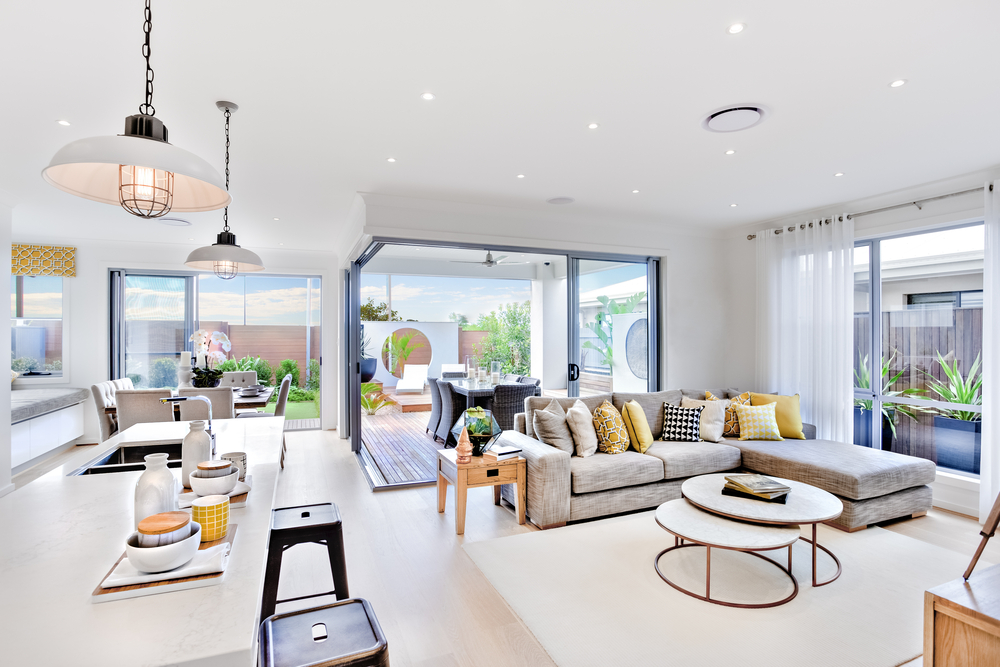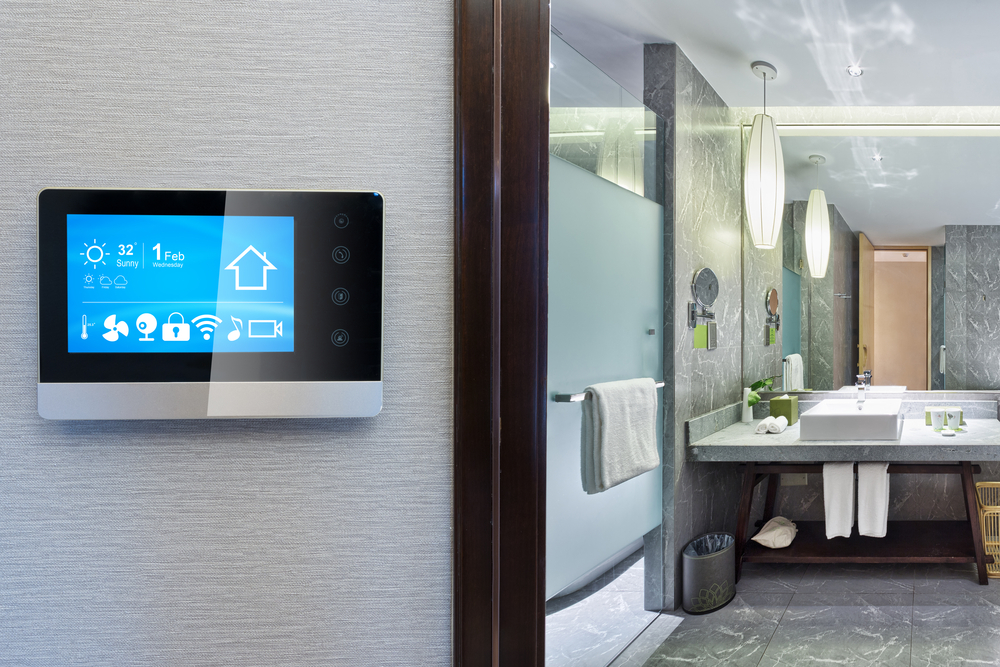Smart lighting has brought a new level of convenience and customization to our homes. With the ability to control lighting remotely, set schedules, and even adjust color and intensity, homeowners can now create the perfect ambiance for any occasion. But smart lighting is more than just a cool gadget—it’s a tool that can enhance our comfort, improve our well-being, and even save us money.
The concept of smart lighting has evolved significantly over the years. Initially, it was all about remote control—being able to turn lights on and off without getting up from the couch. But as technology advanced, so did the capabilities of smart lighting systems. Today, they can do much more than just switch lights on and off. They can adjust brightness levels, change color temperatures, and even create lighting schedules that mimic our daily routines.
What is Smart Lighting?
- Connectivity: Smart lighting systems connect light bulbs to your home’s Wi-Fi network. This connection allows you to control them via a smartphone app or a home automation hub. Some smart lights use Bluetooth technology for direct control from your phone, eliminating the need for a separate hub.
- Voice Assistant Compatibility: Smart lights work with voice assistants like Amazon Alexa, Google Assistant, and Apple’s Siri. This feature enables you to control your lights using voice commands, adding a layer of convenience.
- Energy Efficiency: Most smart lights use LED technology, which is more energy-efficient than traditional incandescent or halogen bulbs. A 60-watt incandescent bulb can be replaced with a 10-watt LED bulb that produces the same amount of light. This means that LED bulbs use approximately 80% less energy than incandescent bulbs.
- Remote Control and Scheduling: The ability to control your lights remotely or set schedules can lead to additional energy savings. For instance, you can turn off the lights remotely if you forget to do so when leaving the house. Or, you can set a schedule for your lights to turn off automatically at a certain time each day.
- Longevity: LED bulbs used in smart lighting systems have long life spans, lasting up to 25,000 hours. This is 25 times longer than traditional light bulbs. This longevity saves you money on replacement costs and reduces the environmental impact of discarding used bulbs.
Types of Smart Lighting
| Type | Description |
|---|---|
| Smart Bulbs | These are the most common type of smart lights. They can be controlled remotely, change color, and adjust brightness. |
| Smart Light Strips | These flexible, adhesive strips of LEDs can be placed under cabinets, behind TVs, or anywhere you want to add indirect lighting. |
| Smart Light Panels | These wall-mounted panels can change color and create dynamic scenes, making them a great option for mood lighting or wall art. |
| Smart Light Switches | These replace your existing light switches and allow you to control your regular light bulbs remotely. |
| Smart Plugs | These plug into your existing outlets and let you control any lamp or light fixture via your smartphone. |
Smart Lighting and Home Automation
The true potential of smart lighting unfolds when it’s integrated into a broader home automation system. For instance, consider a scenario where your smart lighting system is synced with your home’s security system. When the security system detects unusual activity, it can trigger the lights to flash, alerting you and potentially scaring off intruders. Similarly, your smart lights can gradually brighten in the morning to simulate a sunrise, helping you wake up naturally. Or, they can turn off automatically when you leave home, saving energy and money. The possibilities are endless, limited only by the compatibility of your devices and your imagination.
Creative and Sustainable Smart Lighting Ideas for Every Room
Living Room

- Ambient Lighting: Use smart bulbs to create a warm, inviting atmosphere. Adjust the color temperature to match the time of day, promoting relaxation in the evening and alertness during the day.
- Accent Lighting: Highlight artwork or architectural features with smart spotlights. You can change the color or brightness to create different effects.
- Scene Setting: Use smart lighting to create scenes for different activities, like watching a movie or reading a book. With the touch of a button, you can dim the lights, change the color, and create the perfect ambiance.
- Voice Control: Integrate your smart lighting with a voice assistant for hands-free control. You can turn the lights on or off, adjust the brightness, or change the color without lifting a finger.
- Motion Sensors: Install motion sensors to turn the lights on when you enter the room and off when you leave, saving energy and adding convenience.
Kitchen

Task Lighting: Install smart lights under cabinets to illuminate your workspace. You can adjust the brightness to suit your needs, reducing eye strain and improving safety.
Mood Lighting: Use smart bulbs in pendant lights or chandeliers to create a cozy, welcoming atmosphere. You can change the color to match your mood or the occasion.
Energy Efficiency: Set a schedule to turn the lights off at night and on in the morning, or use motion sensors to ensure the lights are only on when needed.
Safety Lighting: Use smart lights to illuminate dark corners or pathways, improving safety and visibility. You can set them to turn on automatically when you enter the room.
Color Changing: Use color-changing smart bulbs to add a fun, creative touch to your kitchen. You can change the color to match your decor, the season, or your mood.
Bedroom

Wake-Up Lights: Use smart bulbs to simulate a sunrise, gradually increasing the brightness to help you wake up naturally.
Night Lights: Install smart night lights that turn on automatically when you get out of bed, guiding your way in the dark without disturbing your sleep.
Mood Lighting: Use smart lighting to create a relaxing, romantic atmosphere. You can adjust the color and brightness to suit your mood.
Reading Lights: Install smart lights in your bedside lamps for reading. You can adjust the brightness to reduce eye strain and set a timer to turn the lights off after a certain time.
Sleep Routine: Use smart lighting to support your sleep routine. Program the lights to dim gradually in the evening, signaling your body that it’s time to sleep.
Bathroom

Task Lighting: Use smart lights around the mirror to provide clear, bright light for grooming tasks. You can adjust the brightness to avoid glare and ensure accurate color rendering.
Mood Lighting: Use smart bulbs to create a spa-like atmosphere for relaxing baths. You can adjust the color and brightness to create a soothing, tranquil ambiance.
Safety Lighting: Install smart lights to illuminate the path to the bathroom at night. You can set them to turn on automatically when you approach, providing light without disturbing others.
Energy Efficiency: Install motion sensors to turn the lights on when you enter the room and off when you leave.
Color Therapy: Use color-changing smart bulbs to experiment with color therapy. Different colors can have different effects on your mood and well-being.
Outdoor

Security Lighting: Use smart lights with motion sensors to deter intruders and illuminate your property when you arrive home late.
Landscape Lighting: Use smart spotlights to highlight trees, plants, or architectural features. You can adjust the brightness and color to create different effects.
Pathway Lighting: Install smart lights along pathways for safety and aesthetics. You can set them to turn on at dusk and off at dawn, or use motion sensors to light the way as you walk.
Entertainment Lighting: Use color-changing smart lights to create a festive atmosphere for outdoor parties or gatherings. You can synchronize the lights with music for a dynamic light show.
Energy Efficiency: Use solar-powered smart lights to save energy and reduce your environmental impact. You can set a schedule to ensure the lights are only on when needed.
Home Office

Task Lighting: Use adjustable smart lights to illuminate your workspace and reduce eye strain. You can change the color temperature to promote focus and productivity.
Ambient Lighting: Use smart bulbs to create a comfortable, inviting atmosphere. You can adjust the brightness and color to suit your mood and the time of day.
Break Reminder: Use smart lighting to remind you to take breaks. Program the lights to change color or flash at regular intervals, signaling you to stand up and stretch.
Video Call Lighting: Use smart lights to ensure you look your best on video calls. You can adjust the brightness and color temperature to improve your appearance on camera.
Energy Efficiency: Set a schedule to turn the lights off when you’re not working, or use motion sensors to ensure the lights are only on when you’re in the room.
Benefits of Smart Lighting
Smart lighting offers a range of benefits that extend beyond mere convenience. Here are some of the key advantages:
Energy Efficiency: Smart lights use LED technology, which is significantly more energy-efficient than traditional incandescent or halogen bulbs. Plus, the ability to control your lights remotely or set schedules means you’re less likely to leave lights on when they’re not needed, saving even more energy.
Customization: With smart lighting, you can adjust the brightness and color of your lights to suit your mood or the task at hand. Whether you’re working, relaxing, or entertaining, you can create the perfect ambiance.
Health and Well-being: Research has shown that lighting can have a significant impact on our mood and well-being. Smart lighting allows you to adjust the color temperature of your lights throughout the day, which can help regulate your body’s natural sleep-wake cycle and improve your sleep quality.
Security: When paired with motion sensors, smart lights can act as a security feature, turning on when movement is detected. Plus, you can set your lights to turn on and off at random intervals when you’re away from home, giving the impression that someone is home and deterring potential intruders.
Comparison of Popular Smart Lighting Solutions
| Brand | Type | Hub Required | Compatibility | Unique Features |
|---|---|---|---|---|
| LIFX | Bulbs | No | Apple HomeKit, Amazon Alexa, Google Assistant | Vibrant colors, deep blacks, no hub required |
| Philips Hue | Bulbs, lightstrips, lamps, fixtures | Yes | Wide range of platforms | Geofencing, scheduling, color temperature control |
| Govee | Lightstrips | No | Limited platforms | Music sync functionality |
| Wyze Bulb | Bulbs | No | Amazon Alexa, Google Assistant | Budget-friendly, Vacation mode |
| Sengled Smart Wi-Fi LED | Bulbs | No | Amazon Alexa, Google Assistant | Affordable, no hub required, energy consumption tracking |
| Sengled Smart LED with Motion Sensor | Outdoor floodlight | Yes | Amazon Alexa, Google Assistant, SmartThings, IFTTT | Built-in motion sensor, weatherproof |
| Ring Solar Pathlight | Outdoor pathlight | Yes | Amazon Alexa, Google Assistant, IFTTT | Built-in motion sensors, integrates with other Ring products |
| Lifx Mini | Bulbs for smaller fixtures | No | Amazon Alexa, Google Assistant, HomeKit | Compact size, advanced automation options |
| TP-LINK Kasa Filament WiFi Light Bulb | Filament-style bulb | No | Amazon Alexa, Google Assistant | Dimmable, energy usage tracking |
| Philips Hue White and Color Ambiance Lightstrip | Lightstrip | Yes | Amazon Alexa, Google Assistant, HomeKit | Trimmable, flexible, accommodates extensions |
| Govee LED Light Strips | Lightstrip | No | Amazon Alexa, Google Assistant | Low cost, music sync feature, highly customizable |
| Nanoleaf Shapes | Wall panels | No | Amazon Alexa, Google Assistant, HomeKit | Simple setup, striking color effects, customizable touch commands |
Future of Smart Lighting Systems
The future of smart lighting is set to be shaped by several exciting advancements. These include the integration of Artificial Intelligence (AI) and the Internet of Things (IoT) for improved automation and energy optimization, the use of Light Fidelity (Li-Fi) for high-speed internet transmission, and the development of human-centric lighting that adjusts to our circadian rhythms. Additionally, we can expect to see more energy-efficient and eco-friendly solutions, advanced control options, increased use of Organic Light Emitting Diodes (OLEDs), and smart city applications that utilize smart lighting for traffic management, public safety, and urban planning.
These advancements promise to make smart lighting an even more integral part of our homes and cities, enhancing comfort, convenience, and sustainability.
Smart Lighting Installation
Installing smart lighting in your home can be a straightforward DIY project, or you can opt for professional assistance. Here’s a basic step-by-step guide:
- Choose Your Smart Lights: The first step is to select the right smart lights that align with your requirements. Consider factors like the type of light (bulb, strip, panel), the color and brightness options, energy efficiency, and compatibility with your existing home automation system or voice assistant.
- Install the Light Fixtures: If you’re replacing existing light fixtures, this step is as simple as screwing in a light bulb. For new installations or more complex fixtures, you may need to follow specific instructions provided by the manufacturer.
- Connect to Your Network: Once the physical installation is complete, you’ll need to connect your smart lights to your home’s Wi-Fi network. This usually involves downloading a smartphone app and following the prompts to connect and configure your lights.
- Set Up Controls and Schedules: After your lights are connected, you can set up controls and schedules. This could include setting your lights to turn on or off at specific times, adjusting brightness and color throughout the day, or setting up automation rules based on other activities in your home.
- Test Your Setup: Finally, test your setup to make sure everything works as expected. Try out different settings and controls to get a feel for what your smart lights can do.
Smart lighting is more than a luxury—it’s a practical and beneficial addition to any home. By offering enhanced control, energy efficiency, and a superior user experience, smart lighting truly is lighting the way forward. As we continue to embrace the concept of smart homes, smart lighting will undoubtedly make our lives more comfortable and our homes more efficient.
At SmartSpace Automation, LLC, we understand that every home is unique, and so are your lighting needs. We offer personalized consultation to help you choose the best smart lighting solutions for your home. Our team of experts can guide you through the installation process, help you set up and configure your system, and provide ongoing support and maintenance.
Serving the North Texas area, we’re proud to bring our expertise to communities across Dallas, Fort Worth, Arlington, Plano, and beyond. Contact us today to explore our wide range of smart lighting solutions and smart home automation services.

